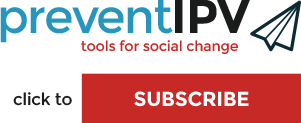Northern NY Call2Men

This brochure provides an at-a-glance overview about Northern NY Call2Men: a community-based engaging-men initiative in Warren & Washington Counties in Upstate New York. Northern NY Call to Men provides an avenue for "regular guys" to develop and act as allies in the prevention of violence against women and girls. Northern NY Call2Men's mission statement is "To educate ourselves and others on the social changes needed to end violence against women."
The goal in developing the brochure was as one means (of several) for Northern NY Call2Men (NNYC2M) to communicate about who they are and what they do -- to other men/potential members, the community at large, and supporters or stakeholders. The goal of developing NNYC2M itself was to create an avenue for men in the community to develop and act as allies and leaders in the (local, regional and potentially statewide) movement to prevent men's violence against women and girls, and in this way to help effect change in social norms (individual, relationship, and potentially community-wide).
"We are committed to working to end all forms of violence against women because it harms our mothers, sisters, daughters and friends in so many ways. As men we have the responsibility and opportunity to make a difference, by challenging the traditional attitudes, norms and behaviors that have supported this injustice."
Campaign organizers offer the following tips:
- NNYC2M would be happy to share more information about the process of developing the campaign.
- Engaging men work is challenging but rewarding! Be prepared for and expect some steps forward and some steps back. For example, sexism will come up; that's the nature of this social-change work. Those seeking to be male allies won't become sexism-free overnight with the wave of a magic wand! That means we have to be willing to take it on, challenge it, in an effective and respectful manner that engenders growth and learning.
- It was our experience that having a structured leadership plan worked much better than "winging it" and just hoping various group members would pitch in and things would get done. The latter didn't work well for us. It seems important to have a specific plan about who will do what regarding the leadership and functioning of the group, but also to have that plan involve multiple people, so that everyone feels important to the functioning of the group, no one feels it "won't matter if I don't show up." Thanks to Men Can Stop Rape for this insight about balancing centralized & decentralized leadership.
Capacity: It helps to have someone dedicated to getting the project started and acting as an ongoing consultant to the project. We think it makes sense for a men's initiative of this nature to have an accountable relationship with the local domestic violence victim services program. So the best consultant will be someone from that program. A good balance of roles and responsibilities is for the men to do the work of making the group function (find meeting space, send out reminders, etc.), while the domestic violence agency representative acts as an intellectual resource person (providing their thinking). The men's initiative should have an avenue to let the domestic violence program representative know what they are planning to do in their meetings, and then report to her on action steps growing out of their meetings. This is to ensure that any action steps planned are in line with what would be in the best interests of survivors and the community. If desired, it can be set up so that the domestic violence program representative attends the men's initiative meetings, or this communication can happen in between meetings. The meetings can be open to women as well but the men should really be taking on the majority of the work, and the focus of the project should be the role of men as allies. Female members might help to promote this in the community, recruit other members, etc., but not have the focus be what women can do to be part of the solution -- that can happen elsewhere.
Cost: Most activities can be done with or without funds -- there are always low- or no-cost ways of doing activities if funds are not available (free meeting space, donated refreshments, etc.). Ideally, the men's project would reimburse the local domestic violence agency person for her time as a consultant to the men's initiative. In our case, and in many cases, the men's project might be being run under the auspices of the domestic violence program, in which case that monetary relationship might not make sense. In our case the domestic violence program person's time was funded by DELTA funds. However, anything that takes the domestic violence program's time should be considered something they should be monetarily compensated for, so it does not take their time away from serving victims... unless they have some primary prevention funding to do this anyway.

